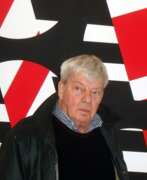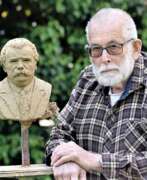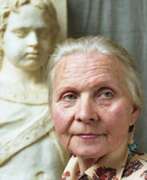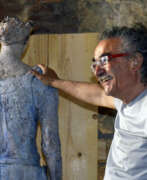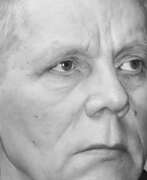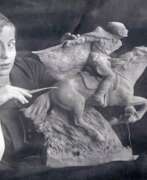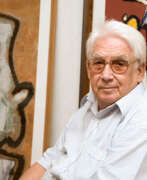Monumentalists 21st century


Boris Vladimirovich Arakcheyev (Russian: Борис Владимирович Аракчеев) was a Soviet and Belarusian artist of the second half of the twentieth and early twenty-first centuries. He is known as a painter and teacher.
Boris Arakcheyev worked in easel painting in the genres of landscape, still life, thematic paintings and battle scenes. A series of portraits of contemporaries and famous people occupies a special place in his creative heritage. He also worked in monumental painting - he was one of the creators of the diorama "Minsk Cauldron" in the Museum of the History of the Great Patriotic War of Belarus.


Robert Petrosovich Avakyan (Russian: Роберт Петросович Авакян) was a Soviet and Uzbek artist of the second half of the twentieth and early twenty-first centuries of Armenian origin. He is known as a painter, graphic artist, sculptor and teacher.
Robert Avakyan was trained in painting, but he is most famous as an author of monumental sculptures. He worked actively in Tashkent, participating in numerous exhibitions, including international sculpture competitions. The master also left his mark in such Uzbek cities as Bukhara, Nukus and Yangibazar, where he created significant monumental works.


Ivan Ivanovich Chorny (Russian: Иван Иванович Чёрный) was a Soviet, Ukrainian and Russian artist of the second half of the twentieth and early twenty-first centuries. He was known for his monumental and decorative works in the style of socialist realism.
Ivan Chorny reoriented his style in the late 1990s, inventing a new technique and moving away from figurativeness in favor of abstract painting. His enigmatic compositions became an expressive expression of inner feelings enriched with colors and lines.


Valery Arutyunovich Geghamyan (Russian: Валерий Арутюнович Гегамян) was a Soviet and Ukrainian artist of the mid-twentieth century of Armenian origin. He is known as a painter, graphic artist and teacher.
Valeriy Geghamyan became famous for his monumental canvases, large thematic cycles and graphic series. He also created portraits, landscapes and still lifes. Since the early 1960s he lived and worked in Odessa and founded the art and graphic arts faculty at the Odessa Pedagogical Institute, where he taught for more than 20 years. The master raised many famous artists, some of whom are also teachers, passing on the experience of their teacher.


Theodor Theodorovich Herzen (Russian: Теодор Теодорович Герцен) was a Soviet and Kyrgyz artist of the second half of the twentieth and early twenty-first centuries of German origin. He is known as a painter, graphic artist, muralist, who was honored with the title of People's Artist of Kyrgyzstan.
Theodor Herzen worked in monumental and decorative art, easel painting and book graphics. One of Herzen's outstanding works was a monumental cycle of illustrations to the Kyrgyz epic "Manas", including more than two hundred linocuts. In this project, he combined his extensive experience of working on Kyrgyz themes with his deep knowledge of the ethnicity, history and spiritual traditions of the Kyrgyz people. Herzen collected extensive ethnographic material and created many sketches of costumes and scenes from Kyrgyz life for this cycle of illustrations.


Nida Kadhim is an Iraqi sculptor, noted for producing a number of monumental works for Baghdad's city centre, some of which are still standing, while others were demolished or looted following the 2003 Iraqi invasion. Kadhim received his formal art education at Baghdad's Academy of Fine Arts in the 1950s. Actively involved in the Iraqi arts community, he became a founding member of the art group known as Al-Mujadidin (The Innovationists). His sculptures focus on grandiose busts and statues of leading figures taken from Iraq's history, or are based on other themes the artist considers worthy. His most well-known sculpture, which is still standing, is the Arab Woman in Zawra Park, Baghdad. It depicts an Arab woman holding a bouquet of flowers out to the new generation of Iraqis who are seeking a better future.


Kenton Nelson is an American muralist, graphic designer, illustrator and educator.
A graduate of California State University, Nelson also studied at Otis College of Art and Design in Los Angeles, California. He later taught there as well.
He first worked as a graphic designer and illustrator for many years before he began painting in the style of modern realism. In his paintings, one can see the influence of 1950s American advertising and pop art. Nelson also creates wall murals. In 2005, he published a two-volume set of art books entitled Rhyme and Reason, Prose and Minuses.
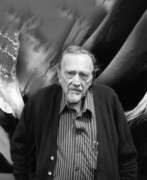

Leonardo Nierman, full name Leonardo Nierman Mendelejis, is a Mexican artist known mainly for his paintings and sculptures. His work is abstract yet still contains visible images of nature such as birds, water, lightning and more. His paintings are in pure colours, while his sculptures are usually in metal, often with a silver hue.


Karl Ulrich Nuss is a German artist and sculptor who creates large-scale bronze compositions.
His father was the sculptor Fritz Nuss (1907-1999), Karl Ulrich Nuss continued his work and developed an unmistakable design style that characterizes all his sculptures. They depict single people, couples, families, as well as new fantastical creations from the animal kingdom. These works can be seen in public spaces in Bochum, Frankfurt/Main and Stuttgart.


Ulrich Rückriem is a German sculptor known for his large-scale stone sculptures that are often displayed in public spaces. He studied at the Werkkunstschule Krefeld and the Kunstakademie Düsseldorf.
Rückriem's early work was influenced by the Minimalist movement, and he became known for creating abstract, geometric sculptures from raw stone blocks. He often works with granite, basalt, and other types of hard stone, using traditional carving techniques to shape and refine his forms.
In the 1970s, Rückriem began creating large-scale public installations, including his "Stone Alignments" series, which consists of rows of standing stones that evoke ancient megaliths and other prehistoric monuments. His work often engages with the natural environment, creating a dialogue between the man-made and the organic.
Rückriem has exhibited his work in museums and galleries around the world, including the Tate Gallery in London, the Solomon R. Guggenheim Museum in New York, and the Kunstmuseum Bonn in Germany. He has also received numerous awards and honors for his contributions to the field of sculpture, including the International Sculpture Prize in 1987 and the Praemium Imperiale in 2010.


Vladimir Ivanovich Stelmashonok (Russian: Владимир Иванович Стельмашонок) was a Belarusian and Soviet artist of the second half of the twentieth and early twenty-first centuries. He is known as a painter, graphic artist and teacher.
Vladimir Stelmashonok worked in different genres and techniques. In easel painting he created mainly portraits - mainly of figures of history and culture of Belarus. In monumental and decorative art, the creative heritage of the artist includes a number of monumental works in Minsk, Ukraine and East Germany, including stained glass windows and mosaics for metro stations.
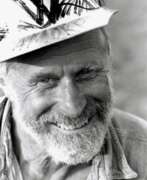

Marco Polo di Suvero, better known as Mark di Suvero, is an abstract expressionist sculptor and 2010 National Medal of Arts recipient.
Mark di Suvero gained an almost instant recognition among art critics with his first solo exhibit at the Green Gallery in the fall of 1960. His early works were large outdoor pieces that incorporated wooden timbers from demolition buildings, tires, scrap metal, and structural steel. This exploration has transformed over time into a focus on H-beams and heavy steel plates. Many of the pieces contain sections that are allowed to swing and rotate giving the overall forms a considerable degree of motion. Di Suvero pioneered the use of a crane as a sculptor's working tool.


Zurab Konstantinovich Tsereteli (Russian: Зураб Константинович Церетели), a Georgian-Russian artist renowned for his monumental sculptures, has left an indelible mark on the landscape of modern art. Born in Tbilisi in 1934, Tsereteli expanded his artistic vision beyond painting after moving to Paris in the 1960s, where he was influenced by luminaries such as Picasso and Chagall. His work is characterized by a blend of dramatic, unconventional styles that have spurred debate but undeniably contributed to the cultural fabric of cities around the world.
Tsereteli's artworks, ranging from sculptures to paintings, are displayed globally, embodying his ethos that "art unites people." Noteworthy projects include the Peter the Great statue in Moscow, the Birth of the New Man in Seville, Spain, and the Tear of Grief in Bayonne, New Jersey, a poignant memorial to the victims of the 9/11 attacks. His commitment to fostering international cultural exchanges is evident in his role as the President of the Russian Academy of Arts and a UNESCO Goodwill Ambassador.
Beyond his public commissions, Tsereteli's contributions to education and the arts are profound. He founded the Moscow Museum of Modern Art and the Museum of Modern Art in Tbilisi, promoting modern and contemporary art in Russia and Georgia. His dedication to the Russian Academy of Arts underscores his belief in the importance of nurturing artistic talent and preserving the heritage of the academic school of fine arts.
For collectors and experts in art and antiques, Tsereteli's oeuvre offers a unique investment in pieces that are not only visually striking but also rich with cultural significance. His work encapsulates the dynamic interplay between traditional and contemporary art forms, making each piece a testament to his lifelong dedication to artistic innovation and cross-cultural dialogue.
To stay updated on new exhibitions, sales, and auction events related to Zurab Konstantinovich Tsereteli, sign up for updates. This subscription is a gateway to the latest developments in the world of a towering figure in art, offering exclusive insights into his ongoing contributions to the global art scene.


Andrei Vladimirovich Vasnetsov (Russian: Андре́й Влади́мирович Васнецов) was a prominent Russian painter, muralist, and a veteran of World War II. He was a key figure in the development of the "Severe Style" in Soviet art, which emerged as a significant movement during the mid-20th century. Vasnetsov's artistic heritage includes a diverse range of works including portraits, landscapes, still lifes, and monumental art such as frescoes and mosaics for public buildings across the USSR.
Born into a family of artists, Andrei was deeply influenced by his grandfather, Victor Vasnetsov, a celebrated master of historical painting. This familial legacy enriched his approach to art, combining traditional themes with a modernist vigor that defined his contributions to Russian art. Vasnetsov's education at the Moscow Institute of Applied Art and the Leningrad Higher School of Art and Industry further honed his skills, particularly in monumental painting.
His works are part of several prestigious collections, including the State Tretyakov Gallery and the Russian Museum, underscoring his significance in the Russian art scene. His commitment to art extended beyond creation; he was an influential mentor and educator, inspiring future generations of artists.
For art collectors and enthusiasts wishing to explore or acquire works by Andrei Vasnetsov, staying informed about upcoming auctions and private sales can be essential. Sign up to receive updates on new artwork sales and auction events featuring Vasnetsov's works, ensuring you never miss an opportunity to own a piece of this influential artist's legacy.
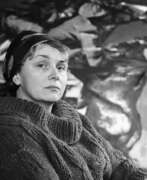

Sofija Veiveryte (Russian: София Мотиевна Вейверите) was a Lithuanian and Soviet artist of the second half of the twentieth and early twenty-first centuries. She is known as a painter, graphic artist, master of frescoes, and teacher.
Sofija Veiveryte created works characterized by monumentality, expressiveness, ability to work with tones and halftones. Her portraits show the influence of the old Renaissance and Baroque masters. Her works are kept in various museums, including the Tretyakov Gallery, the Pushkin Museum of Fine Arts, the Sofia National Gallery (Bulgaria) and the Lithuanian Museum of Theater, Music and Cinema, as well as in private collections.


Rostislav Ivanovich Vovkushevsky (Russian: Ростислав Иванович Вовкушевский) was a Soviet and Russian artist of the second half of the twentieth century. He is known as a painter, muralist and teacher, a representative of the Leningrad school.
Rostislav Vovkushevsky actively exhibited his works since 1949. He worked in both easel and monumental painting, his work included still lifes, portraits, landscapes and genre compositions. Important works of the artist were monumental panels, mosaic compositions and ceremonial curtains for auditoriums. His style was distinguished by decorative elements, clear silhouettes and rich color, as well as rhythmic organization of the canvas.
His works are in museums and private collections around the world.


Vitaly Georgievich Yablonovsky-Snadzsky (Russian: Виталий Георгиевич Яблоновский-Снадзский) is a Soviet and contemporary Russian artist. He is known as a painter specializing in landscapes and still lifes.
Vitaly Yablonovsky-Snadzsky is also known for his monumental paintings of sanatoriums in Sochi, where he lives permanently. He has been actively creating since the early 1970s. Among his most famous works are the paintings "Gifts of Autumn", "Red Poppies", "Dry Grasses", "Clusters of Rowanberries", "Crayfish" and others.
His works are in museums and private collections in Russia and other countries - in Germany, Poland, Yugoslavia, Finland, Syria, France, Spain, USA, Turkey.


Pyotr Ivanovich Zhigimont (Russian: Пётр Иванович Жигимонт) was a Soviet artist of the twentieth and early twenty-first centuries. He is known as a painter, a figure of monumental and decorative art.
Pyotr Zhigimont created many paintings dedicated to the Great Patriotic War. In 1946 he joined the brigade of the Studio of Military Artists named after M. Grekov. He took part in the restoration of the panorama "Battle of Borodino" and the creation of the panorama "Defeat of the Nazi troops at Stalingrad". The master participated in many art exhibitions.
Zhigimont moved to Germany in 1993, where he continued his artistic career.














